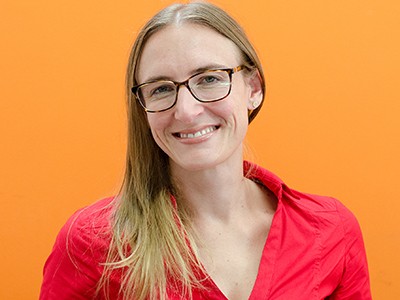After growing up on the tiny Caribbean islands of Aruba and Grenada, I entered my first collegiate chemistry laboratory in the late 1970s, at St. Francis College in Brooklyn, New York. I was so excited that I felt like I was floating. But there was no one like me in the class. The professor was a white man — as was everyone else in the class, except for one white woman at the back of the room. When I went up to her and asked whether all the other women were in another section, she looked perplexed. We became fast friends, and from that day forward, we took every class together, to ensure that neither of us would be the only woman in the room.
Decades later, women still comprise only 29% of the science, technology, engineering and mathematics (STEM) workforce — compared with 49% of non-STEM workers — in the 146 nations evaluated in the World Economic Forum’s 2023 Global Gender Gap Report (see go.nature.com/47xxa). The numbers are even more dire for people of colour: the 2021 US STEM workforce was only 15% Latinx and 9% Black.
Why are there still alarmingly few women — particularly women of colour, like me — in STEM? I think that’s the wrong question. The real question is: what is the cost for women, particularly those of colour, to survive and thrive in STEM — and what can we do to reduce it?

Academia needs radical change — mothers are ready to pave the way
Factors behind the gender gap in STEM include not only lack of promotion, unequal pay and a dearth of meaningful work, but also stress, burnout and insufficient diversity.
Role models who are women and people of colour are often hard to come by. I did not have a single Black female neuroscience instructor in my entire time at university. That is still the experience of many minoritized students attending predominantly white institutions in the United States. It’s a circular problem.
Allostatic load is a term coined by physiological psychologist Eliot Stellar and neuroendocrinologist Bruce McEwen, one of my mentors. It describes how chronic adverse physical, psychological or social situations — including racial and gender-based oppression — cause sustained activation of the body and brain’s stress response, resulting in cumulative wear and tear. Increased allostatic load is associated with depression and anxiety, which can impair motivation. Public-health researcher Arline Geronimus at the University of Michigan in Ann Arbor describes how this can affect minoritized groups in her 2023 book Weathering. Geronimus found that allostatic-load scores indicated that Black women in the United States age faster than do white women. Socio-economic status could not explain the disparities — Black women from all socio-economic classes were likely to have high allostatic loads (A. T. Geronimus et al. Am. J. Public Health 96, 826–833; 2006).

‘I wrote my first piece of code at seven’: women share highs and lows in computer science for Ada Lovelace Day
In my own experience, there is a cost for success in STEM academia. The few minoritized people who seem to thrive might be doing what psychologists call ‘high-effort coping’: working harder than others to succeed, because of anticipated or experienced hostility. We are still exposed to discrimination and an elevated risk of depression, increased allostatic load and accelerated ageing.
As a society, how do we lift these burdens and make real, lasting progress?
On an individual level, what is helpful is finding your people. In the words of US author and civil-rights activist Audre Lorde: “We must allow each other our differences at the same time as we recognize our sameness.” I encourage each person to reflect on their identity markers and find a group that works for them. Location matters. If you can choose where you are educated or work, take into account factors such as the prevalence of people of colour, the number of women and people of colour in leadership roles and how open the people around you are to having difficult conversations.

Don’t get mad, get equal: putting an end to misogyny in science
The need to build communities might seem to add to cognitive load, but I think the opposite is true: seeing other minoritized people doing what we do gives us great strength. Alongside neuroscientist Emmeline Edwards at the US National Institutes of Health, I am a co-chair of World Women in Neuroscience, an independent consulting, mentoring and networking organization that promotes the careers and amplifies the expertise of female neuroscientists across the globe, especially in under-resourced regions.
In more than a decade of experience, we have found that it is crucial to listen to women in a particular region to define their community’s needs. Female neuroscientists in Uganda and Brazil, for example, tell us that the lack of resources and mentorship are priorities. Women in Japan often say they need more networking opportunities and leadership roles.
Allies, institutions and governments must do all it takes to decrease the cost for women and others in under-represented groups in STEM, both early on and throughout their careers. Immediate actions must be to champion pay equity; increase representation, including in leadership; and foster inclusive environments that support everyone. Countless women and people of colour have a passion for science. They should not have to endure extra physical and neurological stress to apply their scientific talents to the world’s most pressing problems.
Competing Interests
Table of Contents
The author declares no competing interests.
